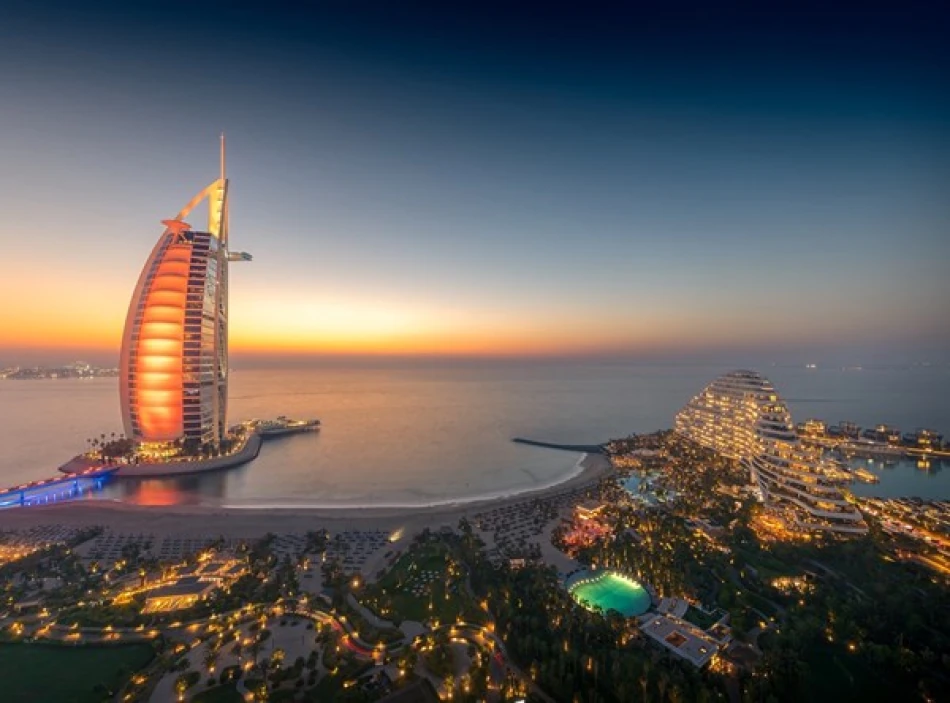
Dubai's Visionary Leader Pledges Unrelenting Pursuit of Record-Breaking Achievements
Dubai's Tourism Surge Signals Strategic Push to Crack Global Top Three Destinations
Dubai has welcomed nearly 10 million visitors in the first half of 2025, marking a 6% growth compared to the same period last year and reinforcing the emirate's ambitious bid to become one of the world's three most visited destinations. The milestone reflects Dubai's accelerating recovery from pandemic-era travel restrictions and its systematic approach to capturing market share from traditional tourism powerhouses.
Record Numbers Drive Economic Diversification Goals
Sheikh Hamdan bin Mohammed bin Rashid Al Maktoum, Dubai's Crown Prince and Deputy Prime Minister, announced the 9.88 million visitor figure via social media, emphasizing that "Dubai will not stop achieving record numbers." The growth trajectory positions Dubai ahead of its own projections under the D33 economic agenda, which targets transforming the city into a top-three global destination by 2033.
This performance is particularly notable given the global tourism landscape's ongoing volatility. While many destinations struggle with capacity constraints and economic headwinds, Dubai's consistent growth suggests its infrastructure investments and marketing strategies are paying dividends.
Strategic Infrastructure Meets Marketing Precision
Public-Private Partnership Model
Dubai's tourism success stems from what Sheikh Hamdan described as "solid partnerships between public and private sectors." This model has enabled rapid scaling of hospitality capacity, with major hotel chains expanding aggressively in the emirate while government entities streamline visa processes and enhance connectivity through Dubai International Airport.
Global Marketing Strategy
The emirate's "effective global marketing strategy" has differentiated Dubai from regional competitors like Qatar and Saudi Arabia, both of whom are investing heavily in tourism infrastructure. Dubai's approach focuses on experiential marketing, leveraging high-profile events from the World Cup to international business conferences to maintain visibility across key source markets.
Competitive Positioning Against Global Giants
Dubai's ambition to crack the global top three puts it in direct competition with established leaders like Paris, London, and Bangkok. Current tourism data suggests Dubai ranks between sixth and eighth globally, meaning the 6% growth rate needs to accelerate significantly to achieve top-three status within the D33 timeline.
The emirate's advantage lies in its geographic position as a connecting hub between Europe, Asia, and Africa, combined with its business-friendly regulatory environment. Unlike European destinations grappling with overtourism concerns, Dubai continues expanding capacity while maintaining service quality standards.
Economic Implications Beyond Tourism Revenue
The visitor surge extends beyond direct tourism spending into Dubai's broader economic diversification strategy. International visitors often become investors, residents, or business partners, contributing to the emirate's transformation into a global financial and technology hub.
For regional economies, Dubai's success creates both opportunities and challenges. While the emirate's growth can boost regional connectivity and trade, it also intensifies competition for high-value tourists and international events across the Gulf Cooperation Council countries.
The 9.88 million figure represents more than statistical achievement—it validates Dubai's calculated bet on becoming a global city that transcends its oil-dependent origins. Whether this momentum can sustain the acceleration needed to reach top-three status will depend on maintaining infrastructure expansion while global travel patterns continue evolving.
 Layla Al Mansoori
Layla Al Mansoori







